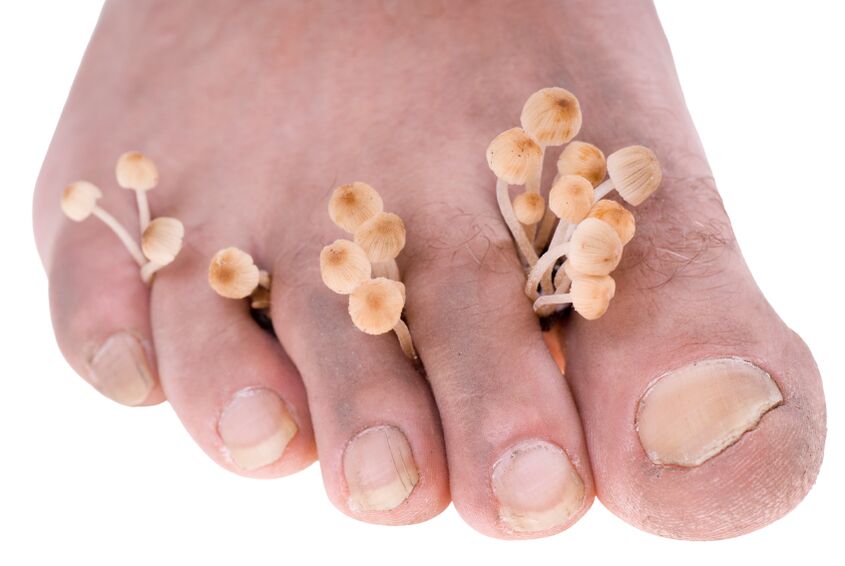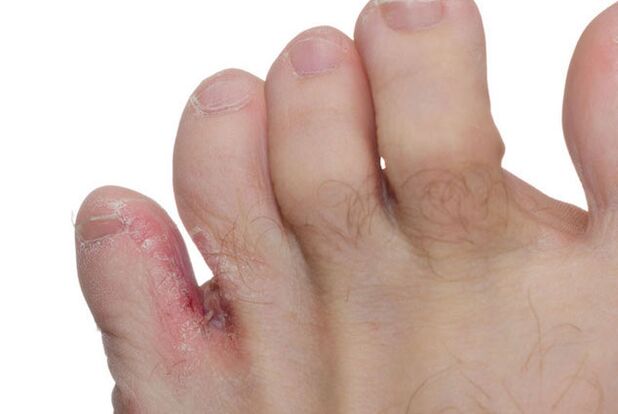Fungal skin disease is an infectious skin disease caused by fungi. Treatment with antifungal creams is often used, giving good but not long-lasting results. The tips below will help prevent toe fungus, which can recur even after treatment.
Who can get infected?

Almost anyone can get athlete's foot. But it is more common in people who sweat more or in people who wear tight shoes and socks, which also causes excessive foot sweating.
Fungal diseases can be transmitted from person to person. For example, this can happen in public bathrooms for athletes or swimmers. Small pieces of infected skin may fall off during bathing. When a small infection begins to develop, it often spreads along the skin. Read about other places you can catch mushrooms here.
What are the symptoms?
The skin between the small toes is usually affected first. The first signs of fungus when an infection first forms on the skin are very minor. The onset will become noticeable when the rash begins to spread and the skin begins to itch and scale. Cracks and inflammation will appear on it. Large cracks in the skin between the toes can become larger and can be very painful. Small pieces of infected skin will fall off.
If interdigital toenail fungus is not treated, the rash will gradually spread along the entire foot. In some cases, it extends to the sole. Usually the infection causes peeling of the entire sole and sides of the foot. Sometimes fungal diseases cause a large blistering rash across the soles of the feet. In this case, we are dealing with foot fungus.

How serious is this?
As a rule, no. Most people successfully treat itchy toes before an infection occurs. Sometimes the infection spreads to the skin of other parts of the body. These are often moist and airless areas, such as the groin.
Usually, fungus, including toenail fungus between the toes, does not spread deeper but only spreads on the surface of the skin. However, other microbes (bacteria) can enter cracks caused by neglected or untreated fungal diseases. Sometimes this can cause a more serious foot or leg infection.
It happens that the infection spreads to the nails - it can be cured. But in this case, to get rid of the fungus, you will need to take antifungal pills for several weeks to get rid of the infection on the nails.Therefore, it is better to treat inter-toe fungus promptly as soon as the first symptoms begin to appear.
Treatment of fungal diseases
Treating fungus between the toes often involves using a variety of antifungal creams and sprays. You can purchase antifungal medications topically at your local pharmacy or by prescription.
To treat fungus between the toes, it is necessary to apply antifungal medication directly to the affected area, that is, the skin of the feet. There are many different medications that can help fight fungal infections.
They are usually sold in cream form, but can also come in spray, liquid, and powder form. These medications are very good at clearing skin of fungal infections. However, there is no evidence that one treatment is better than another.For children, medication should be used more gently.Other options are undecenoic acid or tolnaftate, which should be used only as directed by your doctor.

During treatment, the inflammation usually seems to go away fairly quickly, but you may need treatment for 1-2 weeks after the rash has cleared. This is necessary to completely eliminate the fungus on the skin - this will prevent recurrence.
- Preparations with the active ingredient clotrimazole: use 2-3 times a day for at least 4 weeks.
- Preparation with active ingredient miconazole nitrate: apply twice a day and continue for 10 days after the skin returns to normal.
- Product with active ingredient econazol nitrate: apply twice a day until the skin returns to normal.
- Drugs of the triazole group: apply twice a day for seven days. To cure nail fungus between your toes, you must continue using the medication for a few more days if symptoms get worse. Not suitable for children.
- Preparations with the active ingredient terbinafine hydrochloride: apply once or twice a day for seven days. Not suitable for children.
- Preparations containing undecenoic acid: apply twice a day and continue for a week after the skin returns to normal.
If you encounter this disease for the first time and do not know how to treat foot fungus or make mistakes in choosing treatment, consult your doctor.
For skin, especially inflamed skin, your doctor may prescribe an antifungal cream combined with a mild steroid ointment. They are usually used for no more than seven days. After that, you may need to continue using just one antifungal cream.
Anabolic steroids reduce inflammation, itching and redness within a short period of time. However, steroids do not completely eliminate toe fungus and therefore steroid creams alone should not be used for treatment.
Antifungal medications for toenail fungus are sometimes prescribed for adults if the infection is severe and does not go away with cream. Pills are also necessary if the infection, in addition to the feet, is also in many places on the skin.

However, this interdigital fungus treatment method is not suitable for everyone.
Women who are pregnant or breastfeeding, or people with liver disease, are not always recommended to use antifungal medications. Children are not usually prescribed antifungal treatment.
Although ringworm between the toes can be spread from person to person, you don't need to miss work, school, or sports if you have the fungus.However, in public places, such as swimming pools or saunas, try to cover your feet until the rash goes away.Also, try not to scratch broken skin as this can spread the infection to other areas.
The following tips may prevent athlete's foot from recurring:
- It is necessary to wash your feet every day and thoroughly dry the skin between the toes after washing. This is perhaps the most important point. Wear socks if your feet are not completely dry. The moist skin between the fingers is an ideal place for fungus to grow.
- Do not share other people's towels in public locker rooms. Towels should be washed as often as possible.
- Change socks daily. Fungi grow in the skin scales on unwashed socks. In many ways, cotton socks and leather shoes are better than nylon socks and shoes made from artificial materials, which increase sweating.
- Try to change shoes every 2-3 days, this will help each pair dry completely after wearing.
- Wear flip-flops or sandals in locker rooms and public bathrooms. This prevents your feet from coming into contact with the floor, which may have bits of someone else's skin on them.
- When at home, walk barefoot as much as possible—no shoes or socks—so air can get to your feet. However, this may not be practical for some people.
If athlete's foot keeps recurring, you can prevent it from coming back by regularly using one of these preventative antifungal sprays or creams. As a preventative measure, you can use a variety of preventative creams daily.


























